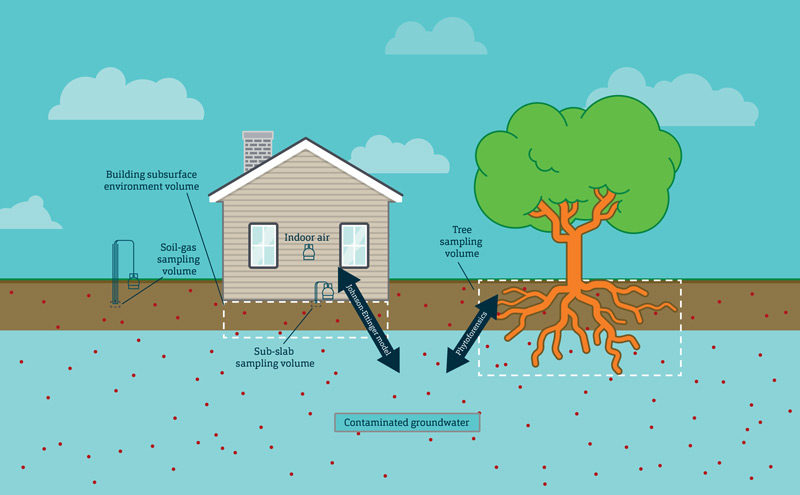Using plants to track pollutants
Posted by Lindsay Stanford

Behold the common house plant, the front-yard shrub, the rhododendron around back. They brighten our lawns, increase our property values, even boost our mental and physical health by reducing carbon dioxide levels. They can also serve as witnesses to exposure to pollutants, a finding by S&T researchers that was published in the journal Science and the Total Environment.
Plants are “place-bound. They grow in one location and they interact with the soil, the groundwater and the surrounding air,” explains Joel Burken, Curators’ Distinguished Professor and chair of civil, architectural and environmental engineering at Missouri S&T. “They’re really masters of mass transfer. They harvest from those surroundings all the carbon, all the water, all the nutrients they need. But chemicals in those surroundings also can accumulate in those plant tissues.
“So if we sample those plants, we’re actually sampling those surroundings. And by understanding the chemical exposure to plant pathways, we can also then understand the chemical exposure to human pathways,” Burken adds.
Doctoral students Majid Bagheri and Khalid Al-jabery, working with Burken and Donald Wunsch, the Mary K. Finley Missouri Distinguished Professor of Computer Engineering at S&T, used machine learning techniques and statistical analysis to help better understand how groundwater contaminants are absorbed by plant roots.
Their research builds on a three-year National Science Foundation grant awarded to Burken; V.A. Samaranayake, Curators’ Teaching Professor of mathematics and statistics; and Glenn Morrison, professor of environmental engineering, to study how pollutants absorbed by plants can move through soil and enter a building in a process known as vapor intrusion.
“By understanding the chemical interactions, we really have a potential to sample almost anywhere on the globe — especially the places that we inhabit. And by sampling that plant — a bio-sentinel — we may better understand how we’re exposed to chemicals, and how to better prevent that,” Burken says.